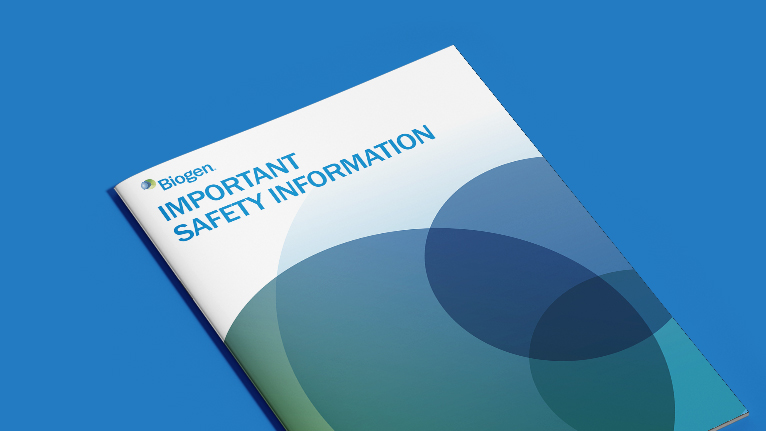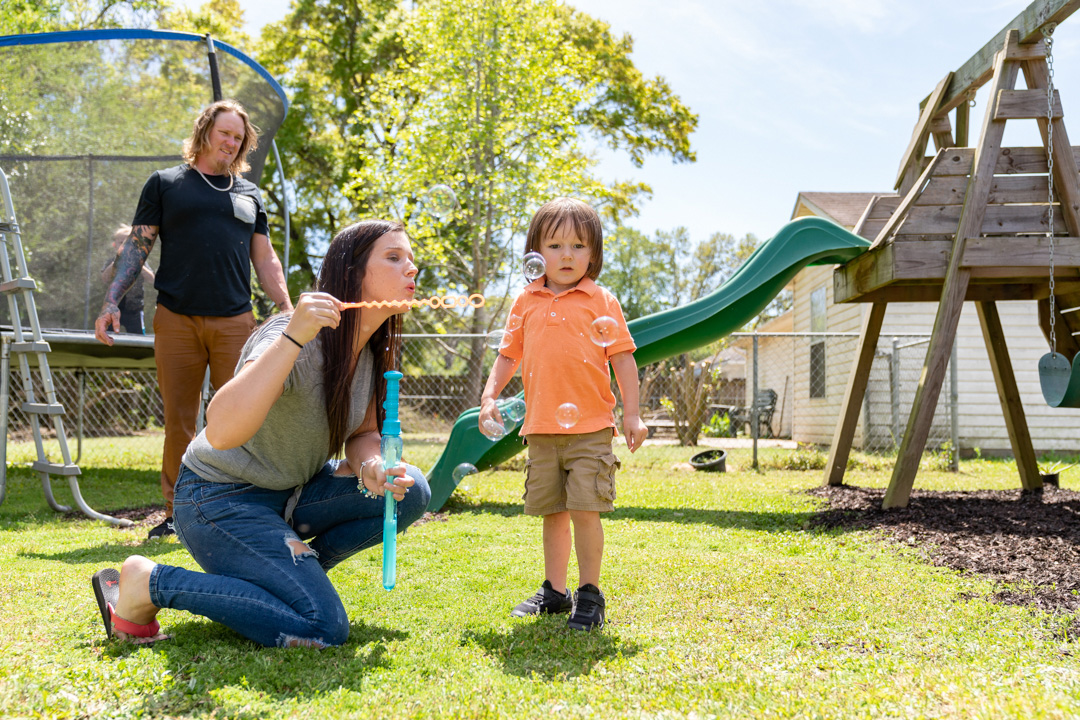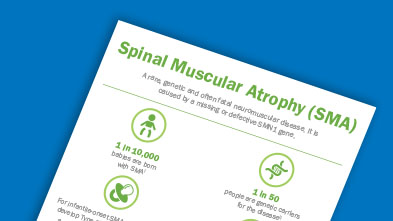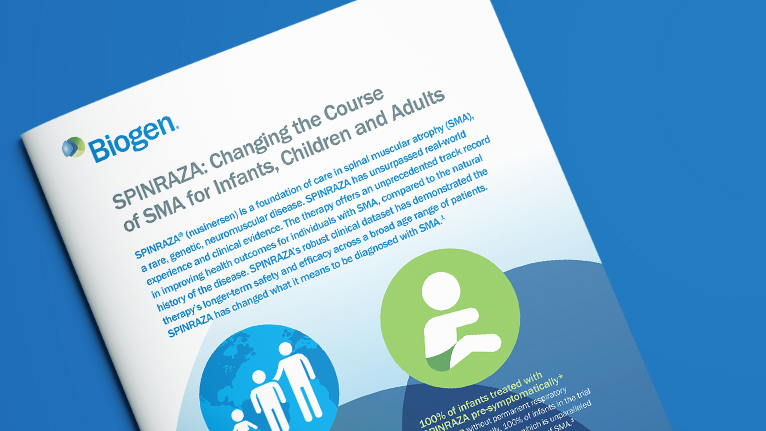

CAMBRIDGE, Mass., July 1, 2019 /PRNewswire/ -- Biogen (Nasdaq: BIIB) today announced new results from the NURTURE study, adding data to the longest study of spinal muscular atrophy (SMA) in pre-symptomatic infants (n=25). These data reported, after up to 45.1 months of analysis, continue to demonstrate efficacy and safety in patients treated pre-symptomatically with SPINRAZA in comparison to the natural history of this disease. These new data also showed that patients treated with SPINRAZA had continuous improvement with the overwhelming majority of patients achieving motor milestones in a normal timeframe.
Experience the interactive Multichannel News Release here: https://www.multivu.com/players/English/8560251-biogen-nurture-study-spinraza-spinal-muscular-atrophy-treatment-data/
These data are being presented at the Cure SMA Annual SMA Conference in Anaheim, CA (June 28-July 1, 2019) and the 5th Congress of the European Academy of Neurology (EAN) in Oslo, Norway (June 29-July 2, 2019).
"These study results demonstrate the durable impact of pre-symptomatic, proactive treatment on transforming the natural course of this disease. We are seeing an extensive number of patients continually meeting child motor development milestones and making unprecedented gains in a previously hopeless and often fatal condition," said Darryl De Vivo, M.D., Sidney Carter Professor of Neurology and Pediatrics, Columbia University Irving Medical Center in New York, New York. "SPINRAZA is setting patients on a path toward survival, greater mobility and independence, which is helping improve outcomes for patients of all ages."
Results from NURTURE, an ongoing, Phase 2, open-label study of 25 pre-symptomatic patients with SMA (most likely to develop SMA Type 1 or 2) who received their first dose of SPINRAZA before six weeks old, demonstrated unparalleled results in comparison to the natural history of SMA. As of March 2019:
"A few years ago, SMA patients had no treatment options and faced significant care challenges," said Kenneth Hobby, President of Cure SMA, a patient advocacy organization dedicated to the treatment and cure of SMA. "However, the future of SMA has changed and especially with early treatment patients now have a very strong chance to reach age appropriate developmental milestones. These new data demonstrate the dramatic impact where children are now walking independently at four years of age, when the usual lifespan would be under two if untreated. This study provides additional evidence on the maintenance of these improvements. It's critical that research in SMA continues to support the generation of real-world evidence in patients of all ages so that we better understand the long-term implications of SMA and treatment across all types."
Additional presentations at the two meetings highlight results from the ongoing open-label SHINE extension study of children with infantile and later-onset SMA as well the CS2/CS12 analysis of older patients. Biogen also continues to explore the scientific value of phosphorylated neurofilament heavy chain (pNF-H) and will present new data on the ongoing evaluation of its potential as a biomarker in SMA.
About SPINRAZA® (nusinersen)1-4
SPINRAZA is the first therapy approved to treat infants, children and adults with spinal muscular atrophy (SMA) and is available in more than 40 countries. As of March 31, 2019, more than 7,500 individuals have been treated with SPINRAZA for up to six years, based on patients across the post-marketing setting, Expanded Access Program (EAP) and clinical trial participants. SPINRAZA is the only SMA treatment to combine unsurpassed real-world experience and the highest level of clinical evidence across a broad spectrum of patient populations.
SMA is a rare, genetic, neuromuscular disease that is characterized by a loss of motor neurons in the spinal cord and lower brain stem, resulting in severe, progressive muscle atrophy and weakness. Approximately one in 10,000 live births have a diagnosis of SMA and people of all ages are impacted by the disease. It is a leading genetic cause of infant mortality.
SPINRAZA, a foundation of care in SMA, is an antisense oligonucleotide (ASO) designed to target a root cause of SMA by increasing the amount of full-length survival motor neuron (SMN) protein, which is critical to maintaining motor neurons. It is administered by intrathecal injection into the fluid surrounding the spinal cord where motor neurons reside to deliver the treatment where the disease starts.
SPINRAZA currently maintains the largest clinical data set in SMA based on data from over 300 patients across a broad range of SMA populations demonstrating a favorable benefit:risk profile. SPINRAZA was evaluated in two randomized, double-blind, sham-controlled studies (ENDEAR and CHERISH) in infantile and later-onset SMA patients and supported by open label studies in pre-symptomatic infants (NURTURE) and individuals who were treated into adulthood with later-onset SMA (CS2/CS12). The most common adverse events observed were respiratory infection, fever, constipation, headache, vomiting and back pain. Serious infections of hydrocephalus and meningitis have been observed in the post-marketing setting. Renal toxicity and coagulation abnormalities, including acute severe low platelet counts, have been observed after administration of some ASOs. Laboratory tests can monitor for these signs.
Biogen licensed the global rights to develop, manufacture and commercialize SPINRAZA from Ionis Pharmaceuticals, Inc. (Nasdaq: IONS), a leader in antisense therapeutics. Biogen and Ionis conducted an innovative clinical development program that moved SPINRAZA from its first dose in humans in 2011 to its first regulatory approval in five years.
About Biogen
At Biogen, our mission is clear: we are pioneers in neuroscience. Biogen discovers, develops and delivers worldwide innovative therapies for people living with serious neurological and neurodegenerative diseases as well as related therapeutic adjacencies. One of the world's first global biotechnology companies, Biogen was founded in 1978 by Charles Weissmann, Heinz Schaller, Kenneth Murray and Nobel Prize winners Walter Gilbert and Phillip Sharp, and today has the leading portfolio of medicines to treat multiple sclerosis, has introduced the first approved treatment for spinal muscular atrophy and is focused on advancing neuroscience research programs in MS and neuroimmunology, Alzheimer's disease and dementia, movement disorders, neuromuscular disorders, acute neurology, neurocognitive disorders, pain and ophthalmology. Biogen also commercializes biosimilars of advanced biologics.
We routinely post information that may be important to investors on our website at www.biogen.com. To learn more, please visit www.biogen.com and follow us on social media – Twitter, LinkedIn, Facebook, YouTube.
Biogen Safe Harbor
This news release contains forward-looking statements, including statements made pursuant to the safe harbor provisions of the Private Securities Litigation Reform Act of 1995, about the potential benefits, safety and efficacy of SPINRAZA; the results of certain real-world data; and the identification and treatment of SMA. These statements may be identified by words such as "aim," "anticipate," "believe," "could," "estimate," "expect," "forecast," "goal," "intend," "may," "plan," "possible," "potential," "will," "would" and other words and terms of similar meaning. Drug development and commercialization involve a high degree of risk, and only a small number of research and development programs result in commercialization of a product. Results in early stage clinical trials may not be indicative of full results or results from later stage or larger scale clinical trials and do not ensure regulatory approval. You should not place undue reliance on these statements or the scientific data presented.
These statements involve risks and uncertainties that could cause actual results to differ materially from those reflected in such statements, including without limitation the occurrence of adverse safety events and/or unexpected concerns that may arise from additional data or analysis; failure to obtain regulatory approvals in other jurisdictions; risks of unexpected costs or delays; failure to protect and enforce our data, intellectual property and other proprietary rights and uncertainties relating to intellectual property claims and challenges; product liability claims; and third party collaboration risks. The foregoing sets forth many, but not all, of the factors that could cause actual results to differ from our expectations in any forward-looking statement. Investors should consider this cautionary statement, as well as the risk factors identified in our most recent annual or quarterly report and in other reports we have filed with the Securities and Exchange Commission. These statements are based on our current beliefs and expectations and speak only as of the date of this news release. We do not undertake any obligation to publicly update any forward-looking statements, whether as a result of new information, future developments or otherwise.
Reference:





SOURCE Biogen Inc.
